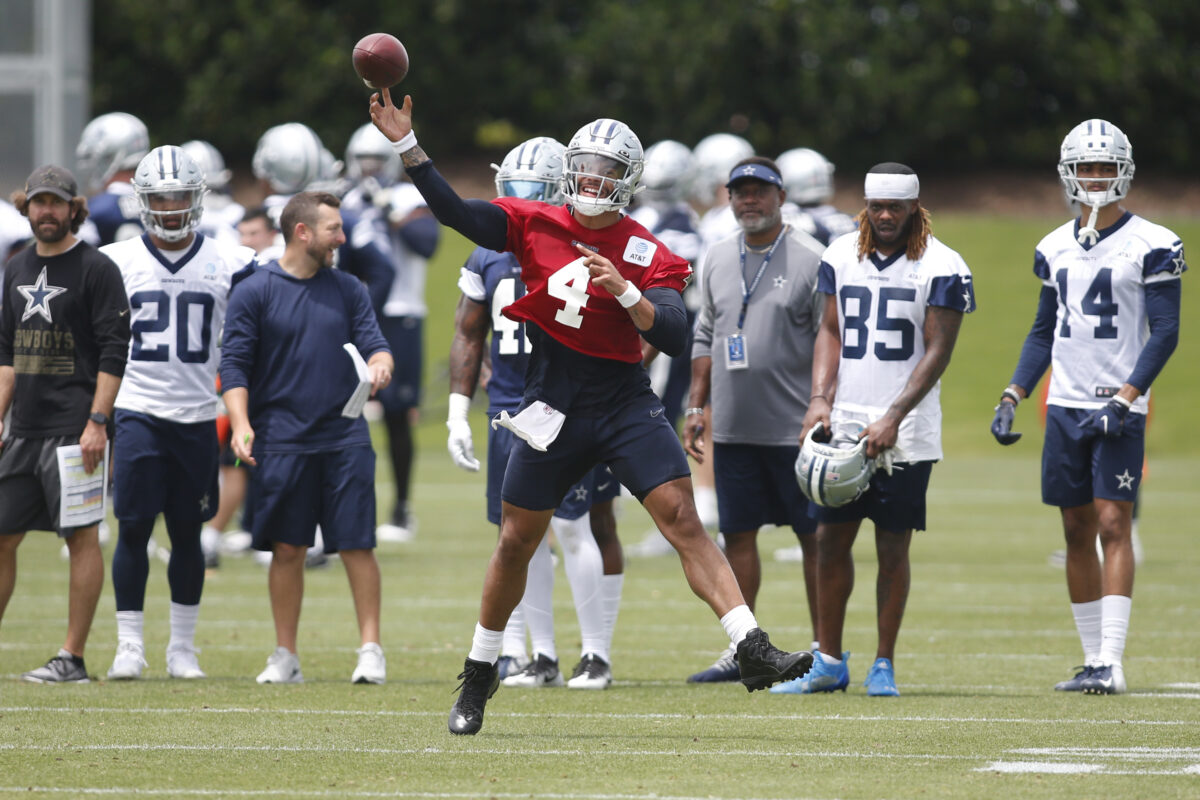You have to do this.
If you have never played Best Ball fantasy football, you are missing out on a fun, easy way to hone your drafting skills without ever setting lineups or managing rosters during the season. You might even win a few bucks.
There’s no better way to hone your drafting skills and learn about how players are being commonly valued, than to play in a handful of Best Ball drafts.
Best ball pertains to a scoring/team management style where you draft a team in a league of 12 (usually), and then the league software determines your highest possible weekly lineup score. You draft a team and let it go. There are no roster moves, and no starting decisions. Just check if you won at the end of the season.
What applies directly to all fantasy league drafts
- Player values. Regardless of how teams may construct their rosters in a Best Ball format, they will still value their players the same within their positions. Admit it, there are always a handful of players you want to see on your fantasy team. Playing Best Ball leagues in June and July will give you a better idea of what round they are most likely to be taken in your big local draft.
- Learning the corner picks – While drafting strategies can differ in this format over traditional league play, it mostly applies in the later rounds. The first three or four rounds should closely mimic what happens in a traditional league draft. That includes what drafters do with those “double” picks at the end of each serpentine round. Fantasy teams are built very differently based on where you draft no matter what the scoring format, so you can have a better idea of what teams look like after three rounds based on the positions they selected from their particular draft slot.
- Kicker and Team Defense runs – Both positions are selected later in any draft, but playing in a few Best Ball leagues arms you with a better feel for when defenses and kickers are likely to be taken in the draft.
- It’s not a mock – These Best Ball drafts can be as cheap as $5 or $10 to play. The beauty is that all drafters take it seriously. That’s not to say there are no head-scratching picks because every league needs that guy. But overall, it is the most realistic “practice” you can get in advance of your traditional fantasy leagues.
Strategies that work better in Best Ball formats
- Quarterbacks – There’s a debate if you need an elite quarterback on a fantasy team to win. You’ll often get higher fantasy points from a top quarterback than mixing and matching two or more “average” quarterbacks based on their weekly matchups. That applies less to Best Ball format because the software is always there to make the right pick between all of your quarterbacks. Two good quarterbacks can deliver more than one great quarterback once the optimal pick is made in Best Ball.
- Running Backs – There’s no escaping that owning a Top-5 running back is a major benefit in fantasy football. But most of the league doesn’t have a Top-5 pick. The position provides more third-down backs and committee players than ever, and so loading up on other positions hurts less if you can gather a number of pass-catchers or goal-line backs. The longer you wait on starting running backs means the more of them you need to prevent a roster weakness. It’s also more important to grab handcuffs to your best backs because there’s no other way to compensate for a player injury.
- Wide Receivers – There are fewer differences between Best Ball or traditional league play with this position because it is the deepest fantasy spot and quality lasts deepest into every draft. Like with running backs, the later you wait to obtain your starters, the higher volume you’ll need to post high fantasy points. In traditional play, you can go cheap on the position, knowing you can raid the waiver wire as things develop. Not so in Best Ball. The best course is to obtain two Top-20 wideouts and fill out the rest with riskier or lower volume receivers. No. 3 wideouts can have big games, but not consistently or often. It’s reasonable to carry more wideouts than any other position.
- Tight Ends – While you can produce more with a smattering of average tight ends once the league automatically assigns the optimal scorer for the week, that still won’t catch up to what a Top-5 tight end will do. Plenty of teams wait on the position as they do in normal league play, but the reality is that you want your team to have as many advantages as possible, and tight end offers little aside from the Top-5. Caveat – sometimes teams draft two Top-5 tight ends, and the bang for the buck is minimal since you only start one, and you’re delaying a starter in another position.
- Kickers and Defenses – Still wait on them. Many Best Ball leagues do not use kickers (golf clap) and defenses always prove inconsistent from year to year, along with likely producing fewer fantasy points than any other position.
Where to play
There are many places and entry fee levels for this format. Most big contests have a Best Ball component in their offerings. Here are four of the lower-cost options out there for drafters mostly looking for practice.
Bestball 10s – From $5 to $100 (Pays out almost all league fees)
RTSports – $20 (win up to $25,000)
Yahoo – Free to $500 (various prizes depending on level)
FFPC – $5 to $250 (various prizes depending on level)
